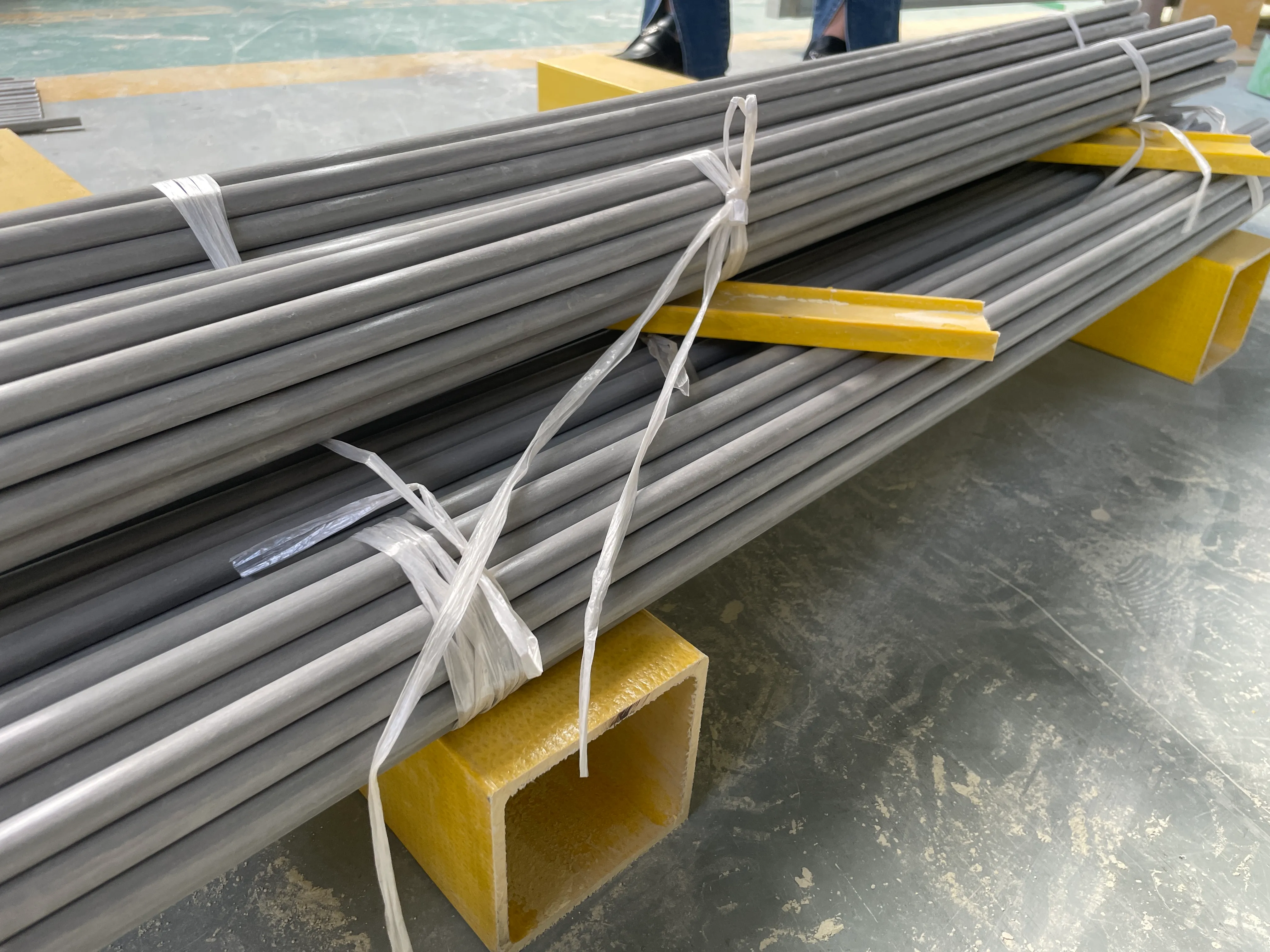loading...
- No. 9, Xingyuan South Street, Dongwaihuan Road, Zaoqiang County, Hengshui, Hebei, China
- admin@zjcomposites.com
- +86 15097380338
- Welcome to visit our website!
frp pultruded profiles
Understanding FRP Pultruded Profiles Revolutionizing Construction and Manufacturing
Fiber Reinforced Polymer (FRP) pultruded profiles are gaining significant traction in various industries for their unique properties and applications. As a composite material, FRP combines the best of both worlds — high strength and low weight — which renders it ideal for a wide range of applications in construction, aerospace, automotive, and even marine sectors.
What is FRP Pultrusion?
Pultrusion is a manufacturing process that produces continuous lengths of reinforced polymer materials. In this process, fibers are impregnated with a resin and then pulled through a heated die, resulting in a fixed cross-sectional profile. This technique allows for the creation of complex shapes with exceptional mechanical properties. The use of glass, carbon, or aramid fibers, combined with thermosetting resins, enables the production of profiles that are not only lightweight but also exceedingly strong, making them suitable for demanding applications.
Benefits of FRP Pultruded Profiles
1. High Strength-to-Weight Ratio One of the most remarkable features of FRP pultruded profiles is their strength-to-weight ratio. These profiles are significantly lighter than traditional materials like steel and aluminum, yet they offer comparable or even superior strength. This property makes them easier to handle and install, resulting in reduced labor costs and increased efficiency on construction sites.
2. Corrosion Resistance Unlike metals, FRP does not corrode when exposed to harsh environments, including saltwater, chemicals, and moisture. This makes FRP pultruded profiles especially valuable in industries such as chemical processing, marine, and wastewater management, where materials must withstand corrosive conditions.
3. Low Thermal Conductivity FRP materials have a lower thermal conductivity compared to metals. This property is particularly advantageous in applications requiring thermal insulation, as it helps in maintaining temperature and reducing energy costs.
4. Design Flexibility The pultrusion process allows for great flexibility in design. Manufacturers can create customized profiles to meet specific requirements, making it possible to produce complex shapes that would be difficult or impossible to achieve with traditional materials.
frp pultruded profiles

5. Sustainability As the world increasingly shifts towards more sustainable practices, FRP pultruded profiles present an environmentally friendly alternative to conventional building materials. They can be manufactured using recyclable materials, and their long lifespan reduces the need for frequent replacements, contributing to less waste.
Applications of FRP Pultruded Profiles
The versatility of FRP pultruded profiles has led to their adoption in diverse sectors
- Construction In the construction industry, FRP profiles are used for structural applications, such as beams, columns, and decking. Their resistance to corrosion makes them ideal for use in bridges, tunnels, and buildings in coastal areas.
- Transportation The automotive and aerospace industries benefit from the lightweight nature of FRP profiles, which can enhance fuel efficiency and overall performance.
- Marine Engineering In the marine sector, FRP pultruded profiles are used for boat building, docks, and marinas due to their resistance to water damage and corrosion.
- Electrical Applications The electrical industry utilizes FRP for cable trays and utility poles, where non-conductive properties and stability under harsh conditions are crucial.
Conclusion
FRP pultruded profiles are revolutionizing the way we think about material selection in construction and manufacturing. With their unique properties of high strength, resistance to corrosion, and lightweight nature, they offer solutions that traditional materials cannot match. As industries continue to embrace innovative and sustainable practices, the role of FRP is likely to expand, paving the way for a future where efficiency, durability, and environmental responsibility coexist harmoniously. With ongoing advancements in technology and materials science, the full potential of FRP pultruded profiles is yet to be realized, making it an exciting time for both manufacturers and consumers alike.
-
The Rise of FRP Profiles: Strong, Lightweight, and Built to LastNewsJul.14,2025
-
SMC Panel Tanks: A Modern Water Storage Solution for All EnvironmentsNewsJul.14,2025
-
GRP Grating: A Modern Solution for Safe and Durable Access SystemsNewsJul.14,2025
-
Galvanized Steel Water Tanks: Durable, Reliable, and Ready for UseNewsJul.14,2025
-
FRP Mini Mesh Grating: The Safer, Smarter Flooring SolutionNewsJul.14,2025
-
Exploring FRP Vessels: Durable Solutions for Modern Fluid HandlingNewsJul.14,2025
-
GRP Structures: The Future of Lightweight, High-Performance EngineeringNewsJun.20,2025
